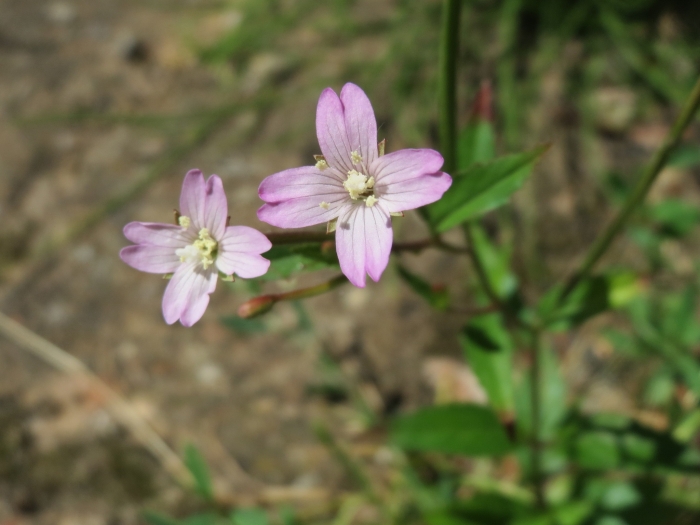Fringed Willowherb
(Epilobium ciliatum)
Fringed Willowherb (Epilobium ciliatum)
/
/

© Andreas Rockstein
CC BY-SA 4.0
Image By:
© Andreas Rockstein
Recorded By:
Copyright:
CC BY-SA 4.0
Copyright Notice:
Photo by: © Andreas Rockstein | License Type: CC BY-SA 4.0 | License URL: http://creativecommons.org/licenses/by-sa/4.0/ | Uploader: anro | Publisher: iNaturalist |






















Estimated Native Range
Summary
Epilobium ciliatum, commonly known as fringed willowherb, American willowherb, slender willow herb, or northern willow herb, is a perennial herb native to a variety of habitats including moist meadows, streambanks, and forest clearings across North America, southern South America, and East Asia. It is an introduced species in Eurasia and Australia. In its native range, it thrives in riparian zones and wetland margins, as well as in disturbed areas such as roadsides. Epilobium ciliatum can grow up to 5 feet tall, featuring lance-shaped leaves and clusters of small, four-petaled flowers that range in color from white to light purple, blooming from June to September. The flowers are modest in size but can be quite numerous, creating a delicate, airy appearance.
This species is valued for its ability to colonize and stabilize soil in restoration projects, and its flowers provide nectar for pollinators. It is often used in wildflower gardens and naturalized areas. Epilobium ciliatum prefers moist to wet soils and full sun to part shade conditions. It is relatively low-maintenance but can spread aggressively if conditions are favorable. While it can be a beneficial plant in its native habitat, it is considered invasive in some regions outside of its native range, where it can outcompete native vegetation. Before planting it, gardeners should consult local regulations and consider the ecological impact.CC BY-SA 4.0
This species is valued for its ability to colonize and stabilize soil in restoration projects, and its flowers provide nectar for pollinators. It is often used in wildflower gardens and naturalized areas. Epilobium ciliatum prefers moist to wet soils and full sun to part shade conditions. It is relatively low-maintenance but can spread aggressively if conditions are favorable. While it can be a beneficial plant in its native habitat, it is considered invasive in some regions outside of its native range, where it can outcompete native vegetation. Before planting it, gardeners should consult local regulations and consider the ecological impact.CC BY-SA 4.0
Plant Description
- Plant Type: Herb
- Height: 1-3 feet
- Width: 1-2 feet
- Growth Rate: Rapid
- Flower Color: Pink, Purple, White
- Flowering Season: Spring, Summer, Fall
- Leaf Retention: Deciduous
Growth Requirements
- Sun: Full Sun, Part Shade
- Water: Medium
- Drainage: Medium
Common Uses
Bee Garden, Butterfly Garden, Low Maintenance
Natural Habitat
Native to moist meadows, streambanks, and forest clearings across North America, southern South America, and East Asia
Other Names
Common Names: Fringed Willowherb
Scientific Names: , Epilobium ciliatum, Epilboium adenocaulon, Epilobium brevistylum, Epilobium maximowitzii,
GBIF Accepted Name: